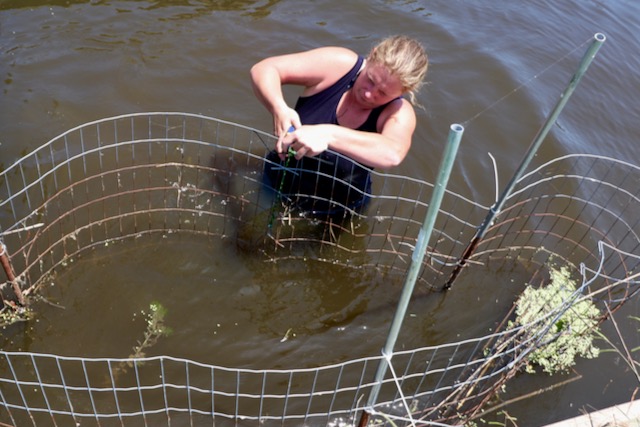

VIRGINIA BEACH — In a way, our own Back Bay is like a kid whose big sister or brother gets more attention. But Back Bay deserves as much love as we show the mighty Chesapeake Bay because it is of vital importance to Virginia Beach and nearby points.
It’s a place of recreation, a fishing hole to some. It’s a pretty site to visit for others. Of course, it’s a vitally important nursery for fish and habitat for wildlife within and above the water.
At one time, it was a famous destination with fishing and hunting lodges sprinkled around the area. We still practice and celebrate outdoor life here, including the artistry of the storied decoy makers who practiced here and in nearby North Carolina.
And Back Bay is specifically important for fish to develop before they swim out to make it in the big, bad ocean.
If you love to fish or eat fish, this ecosystem matters.
Our gem of a bay needs our help. There has been a decline of aquatic life in the bay and the vegetation that feeds and supports it over many decades. Some hunting and fishing lodges have fallen off, and I remember seeing one in ruins that must have been magnificent in its day.
I did not see the bay in its glory. I hear it, too, was a sight to behold.
We owe it to future generations to try to restore and maintain it. Some steps are being taken. It’s going to take science, changes in agricultural practices, water quality testing and the work of replanting aquatic plants.
In future columns, I plan to write about various efforts to help the bay. Recently, I’ve written about efforts to influence decisions by farmers through the Virginia Dare Soil & Water Conservation District. Soon, I hope to focus upon the marsh terrace restoration project meant to slow waters that enter the bay through our unique wind tide flooding. That exciting project is part of the suite of flood mitigation projects city voters overwhelmingly backed in the referendum a couple years ago.
Now, I want to highlight the work of Dr. Sara Sweeten, who for years has been studying and acting upon her research on replanting wild celery in the bay, an important form of submerged aquatic vegetation.
“The wild celery is like the trees in the rain forest,” Sweeten told me recently. “People should care about wild celery for the same reason as they care about trees.”
It may be largely out of sight, but it is important for wildlife. Sweeten likens the present underwater world of Back Bay to the Dust Bowl in the 1920s through 1940s. We need to change the state of the bay.
There are number of ways attention to submerged aquatic vegetation and better practices can help. Wild celery can take up excess fertilizers from runoff. There are other things leaders, farmers and homeowners can do as well.
Sweeten suggests pushing planting back 10 feet from ditches as one approach, and areas that tend to flood should be allowed to return to marshland.
The bay can become a series of sponges, effectively, including the “terraces” which are going to be built, the wild celery and newly created marshes which could be allowed to rebuild themselves. We could eliminate a portion of flooding with the ways of nature.
Sweeten would like to plant more. She has gone out on her own. Sweeten, who began this work as a scholarly pursuit, has a new business called SAVY, which stands for submerged aquatic vegetation yeah.
I say we support her work. The city has money allocated for the island rebuilding prioject, maybe they can also chip in some for planting wild celery around the islands.
Aquatic plants can help slow the water approaching shore and provide lots of shoreline and habitat around all of the islands. The edges or shoreline is where lots of life happens. Projects such as the marsh terraces and Sweeten’s work planting wild celery are exciting. Wild celery can, if conditions are right, expand to many times the planted area.
It will take a mix of approaches to restore our bay, but it’s impressive that some of the ways we might do this involve returning aspects of the healthy bay that have changed over time. Things could improve with support.
Maybe I’ll even catch a fish.
The author, a farmer and consultant, writes about sustainable farming and gardening for The Independent News. Reach him via farmerjohnnewearth@yahoo.com.
© 2023 Pungo Publishing Co., LLC

